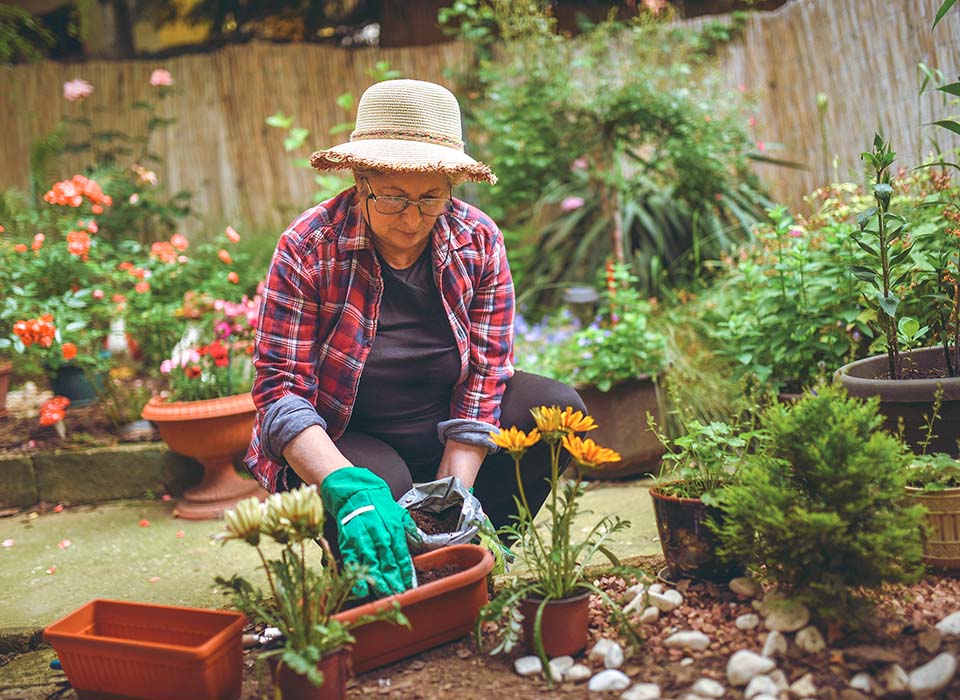Gardening is a great way to relieve stress as well as to keep the heart pumping to stay healthy. While gardening may seem like an easy, leisurely activity, it can cause injuries just like any other sport or exercise. Repetitive positioning like kneeling, sitting, or being bent over for long periods of time are common in gardening and can be harmful to your body.
Common Injuries
Strains
Strains to the elbow, forearm, wrist, or thumb can be caused by overuse. When gardening, the repetitive nature of digging and weeding motions can cause discomfort and eventually strain those muscles. These injuries can also be caused by using tools improperly or by using cheaper multipurpose tools. Invest in the proper tools for the job to ensure that the motion you are using is correct. Another way to prevent these injuries is to rotate between tasks to make sure that you are not using the same muscles for an extended period of time.
Back Pain
Gardening requires a broad range of motion. If you are not careful, you can twist the wrong way and seriously injure your back. The best way to prevent back injury is to warm up by stretching before a long day in the garden. You should also keep your back straight to avoid bending. Make sure to rely on your legs instead of your back by squatting or going down on one knee when picking up large or heavy items.
Prepatellar (Kneecap) Bursitis
The kneeling position that is often used in gardening while planting or removing weeds causes a lot of stress on the knee that can lead to damaging inflammation. Bursitis is an inflammation of the bursa, which allows the kneecap to move freely as it is bent and straightened out. The best way to prevent these injuries is to use some form of protection when kneeling or bending down. You can use either strap-on knee pads or a garden kneeler that you can carry around.
Basic Prevention Tips
The best way to prevent any type of activity-related injury is to properly warm-up and cool down. Start each gardening session with proper stretching as well as a stretch to cool down at the end. Take breaks throughout the day, so you don’t stay in one position for too long. If you need to kneel, try kneeling on one leg with the other foot planted on the ground, and make sure to switch legs often to keep the muscles fresh. Lastly, use good body mechanics to prevent overuse injuries. When picking up heavy or large objects in the garden, make sure you use your legs, in a squatting position, and not your back to lead the movement. Do not twist in awkward ways and protect your muscles when bent down or kneeling while gardening. As with any activity, if you are feeling any pain or fatigue take a break. If an injury occurs and persists, contact your doctor for further care.
